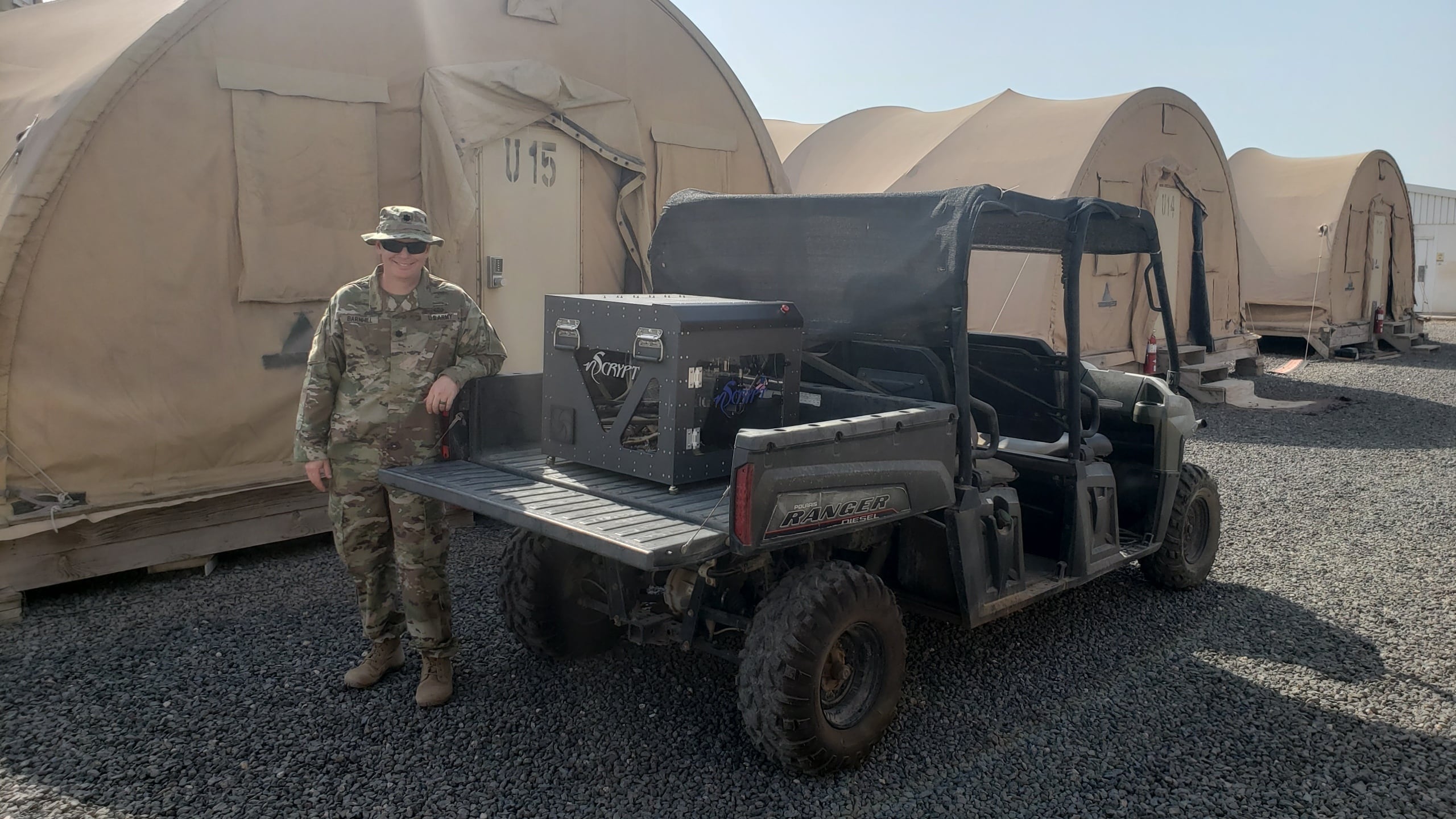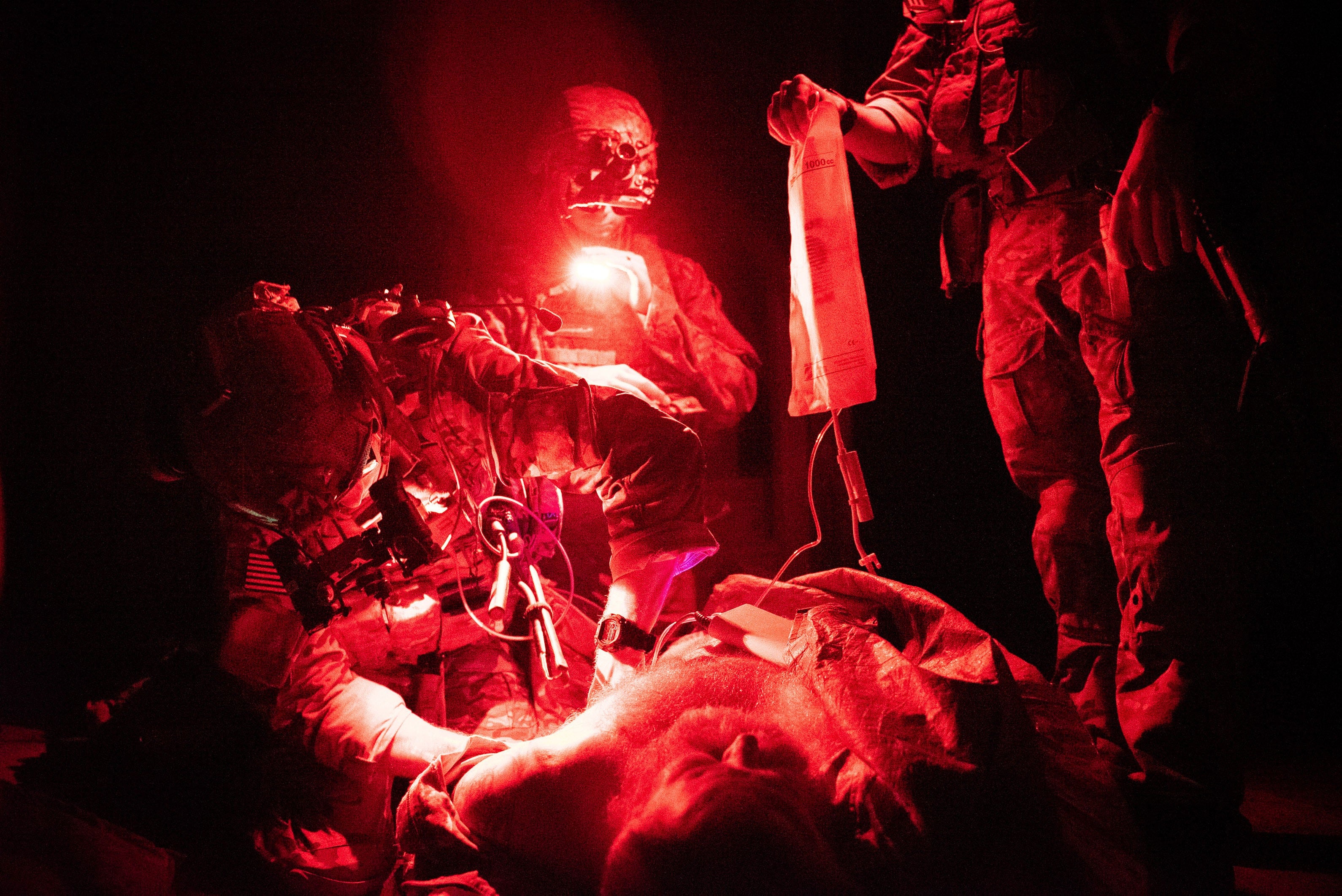Twenty-six cadets in their final year at West Point are conducting bio-printing research that aims to create stem-cell laden bandages for burns in the field, bio-printed menisci and livers, and one day even build bio-engineered blood vessels to make organs viable.
All of it is designed to increase survival rates for casualties in the field and treat the wounded during their recovery process at home.
The technology isn’t quite at the level in which a bio-printed organ can be implanted into the body. However, Lt. Col. Jason Barnhill, the life science program director at West Point, was able to bio-print within just five minutes a number of bandages designed to slowly release antibiotics into wounds while on a trip to Africa recently, according to several Army news releases.
Bio-printing isn’t all that different from 3D printing using plastics. To start, a model is created on a computer and split into printable parts that can be built layer-by-layer, according to the West Point news release. Rather than using plastic, though, bio-printing uses a “bioink” made up of collagen and stem cells.
During Barnhill’s trip abroad, he was also able to bio-print a meniscus, the disk-shaped piece of cartilage that absorbs shock inside a joint. Barnhill printed the cartilage using an image that was sent electronically from the United States to his remote location.
It was the first demonstration of cyber manufacturing where complex designs were transmitted and produced in a remote location, according to the Uniformed Services University of the Health Sciences, which is partnering with West Point on its bio-printing initiatives.
Barnhill was also fabricating surgical objects that could be manufactured and sterilized on-site, such as scalpel and hemostat — a tool that helps control bleeding. He’s now leading West Point cadets working on seven different capstone projects this year that take on different aspects of bio-printing, including the production of bio-bandages and viable organs.

Cadets are still in the research phase but they will start printing cells after spring break. The bio-bandage, meniscus and liver teams are aiming to print a real-life product before graduation.
A meniscus created in the field would treat a common injury among athletes and troops, and the liver could be used to test medicines. However, the meniscus and liver created by West Point cadets this year won’t be able to be implanted and used, according to Cadet Thatcher Shepard, a life science major working on the meniscus project.
“[We have to] make sure the body doesn’t reject the new bioprinted meniscus and also the emplacement," Shepard said in the release. "There can be difficulties with that. Right now, we’re trying to just make a viable meniscus. Then, we’ll look into further research to be able to work on methods of actually placing it into the body.”
Cadets are also researching how to print blood vessels, which would be key to helping organs achieve blood flow.
RELATED

“It’s kind of like putting the cart before the horse,” Cadet Michael Deegan, a life science major working on one of the blood vessel projects, said in the release. “You’ve printed it, great, but what’s the point of printing it if it’s not going to survive inside your body? Being able to work on that fundamental step that’s actually going to make these organs viable is what drew me and my teammates to be able to do this.”
The bio-bandages being developed by cadets are a little further along in terms of feasibility.
Bio-bandages are intended to work by taking cells from an injured soldier who just suffered severe burns, such as those seen in the aftermath of IED attacks. Those cells would then be used to print a bandage catered specifically to a soldiers’ wound from a field-expedient printer in a Humvee or other vehicle.
“Introducing a bandage could kickstart that healing process. The faster you start healing, the less scarring and the more likely you’re going to recover," said Cadet Channah Mills, a life science major working on one of the bio-bandage projects.
More than half of the cadets working on these projects are planning to attend medical school after they graduate from West Point. Before then, the bio-printing projects will be presented at West Point on April 30 — a day devoted to showcasing cadets’ year-long capstone projects.
Kyle Rempfer was an editor and reporter who has covered combat operations, criminal cases, foreign military assistance and training accidents. Before entering journalism, Kyle served in U.S. Air Force Special Tactics and deployed in 2014 to Paktika Province, Afghanistan, and Baghdad, Iraq.




